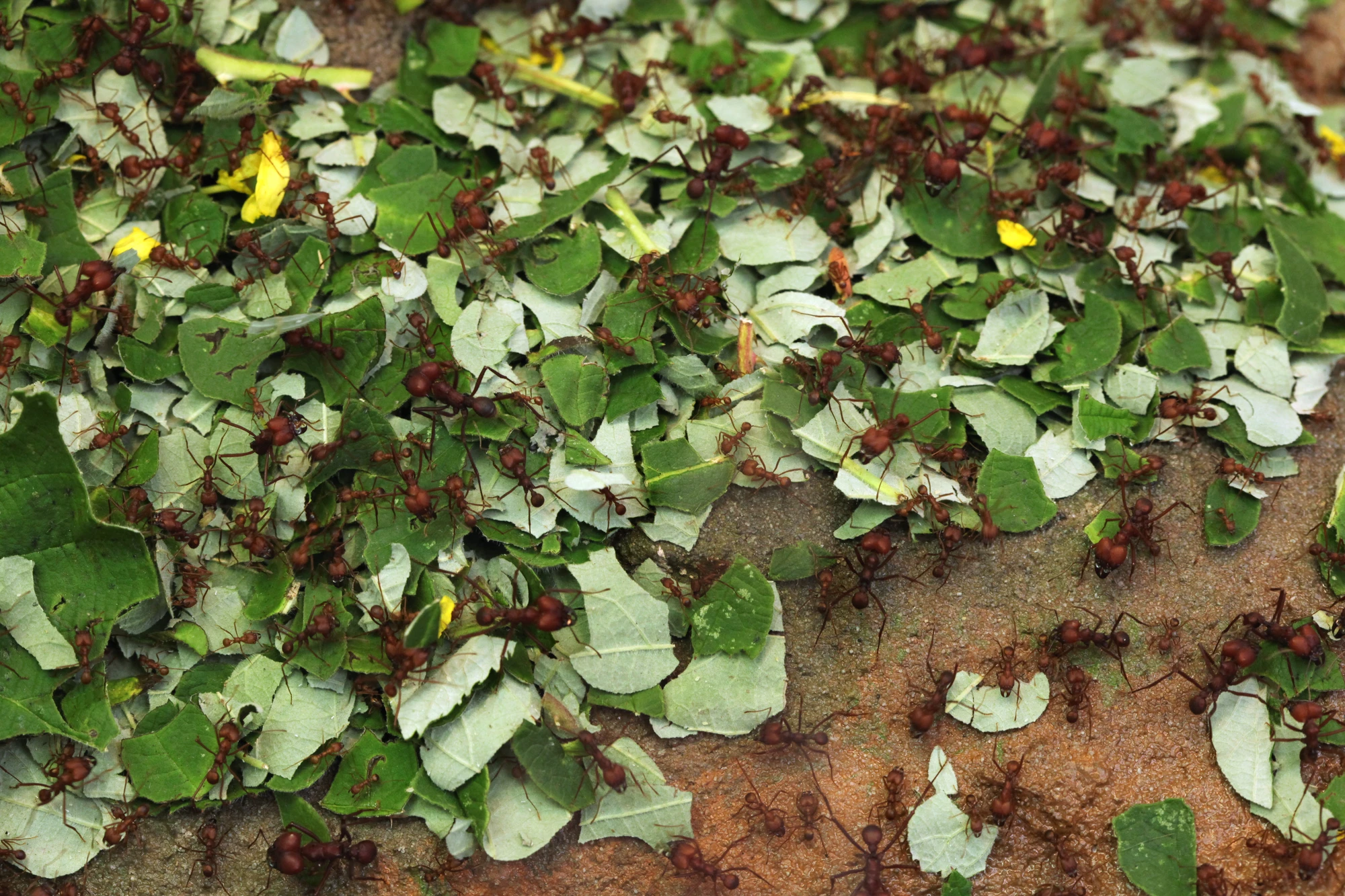It's a quandary – leafcutter ants cause a great deal of damage to tropical crops, but applying pesticides to those crops harms the environment. Scientists have developed a possible solution, in the form of a high-tech material that uses an odor to trap ants.
Like other social insects, leafcutter ants emit chemicals known as alarm pheromones when they detect a threat. Other ants instinctively follow the scent of those pheromones to its source, so they can help defend their colony.
In the past, such pheromones have been incorporated into ant traps. Because the chemicals evaporate relatively quickly, though, those traps soon become ineffective.
Led by Prof. Andrew Burrows, researchers at Britain's University of Bath set out to find a trap material that keeps the pheromones around for longer. They ultimately had the most success with what are known as metal-organic frameworks (MOFs) – these are porous materials made up of an array of positively charged metal ions surrounded by organic "linker" molecules.
The team started by conducting computer simulations, to see how alarm pheromone molecules would move around within the pores of different types of MOFs. More specifically, the researchers were looking for a material that could absorb large amounts of the chemicals, and release them over a long period of time.
They ultimately came up with a "molecular sponge" MOF that releases the pheromones over several months, as opposed to the usual several days. Colleagues from the University of Sussex have field-tested the material in ant traps at a eucalyptus plantation in Brazil, where it successfully attracted leafcutter ants.
"Our proof-of-principle study shows that these materials are effective in delivering the pheromone and that the insects respond normally to it," says Burrows. "This system could reduce the amount of pesticides sprayed on a crop and could be particularly useful for high value crops in small areas."
A paper on the study was recently published in the journal Dalton Transactions.
Source: University of Bath




